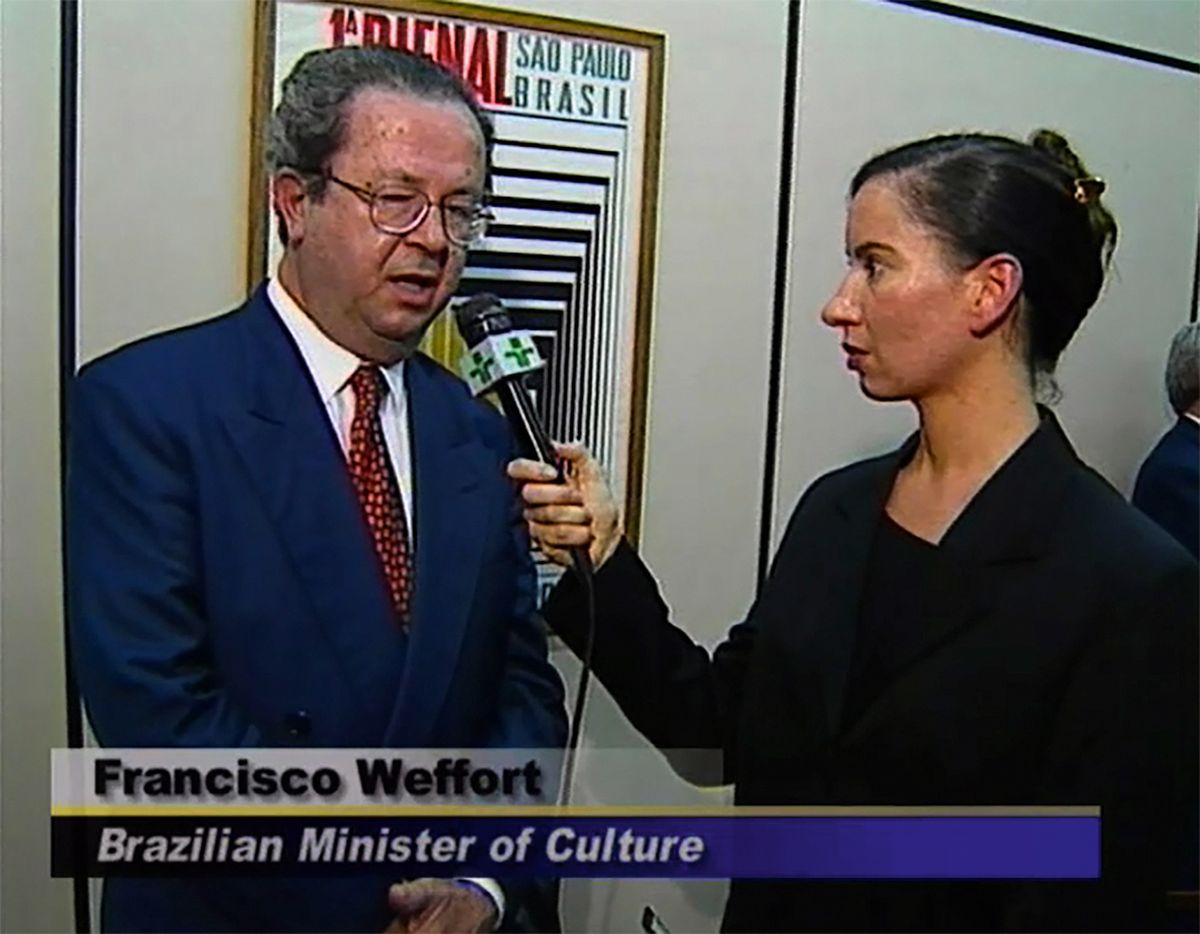It’s been a minute since Andrea Fraser exhibited in a commercial New York gallery: 13 years, to be precise. Yet, here she is, big as life, looking straight at us from a video screen at Marian Goodman Gallery—all seven of her.
That’s how many personas Fraser embodies during This Meeting is Being Recorded, the feature-length video that reintroduces her to a market she has long held suspect. Its title alone might prompt viewers to scan the room for evidence of spyware, especially when Fraser’s performance begins to reorder their mental terrain.
She’s made use of surveillance cameras before, in places as public as the Guggenheim Bilbao (for the hilariously swooning Little Frank and His Carp, 2001) and as private as the hotel room where she had indifferent sex with a man who paid an undisclosed amount for both her service and the still controversial work, Untitled (2004), produced in an edition of five.
In that case, Fraser’s concern with the context and economies of art-making served her well, even if it did lead to her break from Friedrich Petzel, her US dealer. (Nagel Draxler remains her European gallery.) “The collector paid a lot more than the check he wrote,” Fraser says darkly, “because he put himself on the line. Other people who bought it didn’t put anything on the line.” Her expression brightens when she confesses to brokering the sale of the collector’s edition to the Whitney Museum herself. Laughing, she says, “So, I got a percentage!”
In the new video, only Fraser appears on a tall, freestanding screen, emoting from a chair and speaking for 99 minutes to whomever sits in the six other chairs arrayed before her in the darkened gallery. “It goes by quickly,” Fraser assures me during a Zoom call from Los Angeles. It’s also more scrappy and nuanced than listening to a group of seven white women wrestle with the consequences and the comforts of privilege might suggest.
The road to This Meeting began in 2014, with Not Just a Few of Us, Fraser’s uncanny, deeply researched performance at the New Orleans Museum of Art for the Prospect 3 biennial. Barely moving from her lectern, she spoke as 19 different city council members arguing a 1992 proposal to desegregate private Mardi Gras krewes. Her audience included local citizens who were profoundly affected by that debate. One, a white man sitting next to me, was shattered by Fraser’s authenticity.
She has had her own crises: her break with Petzel coincided with the Occupy Wall Street movement and writing L’1%, C’est Moi, the essay that became a touchstone of her analyses of links between the super-wealthy and the governance of supposedly democratic art institutions. She also decided not to permit individual collectors to buy her work, throwing in with the very institutions that she was telling to step up and clean house.
Galleries used to have artistic programmes and now they don’t—they have market strategiesAndrea Fraser
Fraser’s ambivalence toward the art market had not faded when Philipp Kaiser became president of Marian Goodman Gallery. He and Fraser had known each other for several years; in 2013, when she won the €100,000 Wolfgang Hahn Prize awarded by the Ludwig Museum, Kaiser was its director. “Galleries used to have artistic programmes and now they don’t,” Fraser says. “They have market strategies.” Goodman’s was different. “You go in there,” she says with a giggle, “and it feels like a research facility.”
Nevertheless, the gallery is “a good fit” for her work in the context of moving-image installations by such artists as Steve McQueen, Dara Birnbaum and the late Chantal Akerman. The roster also includes inspirations like Marcel Broodthaers, Dan Graham and Christian Boltanski. “I mean, it’s incredible!” she exclaims, admitting to a bit of “imposter anxiety” in such company. “I’ve established a position through what I’ve written and said. I’m not oriented to production. I’m not like younger artists who come out with a business plan. I encourage a thoughtful and intimate encounter with the work. And there’s not a lot of room for that in the art world now.”
• Andrea Fraser, 12 January-25 February, Marian Goodman Gallery, New York


